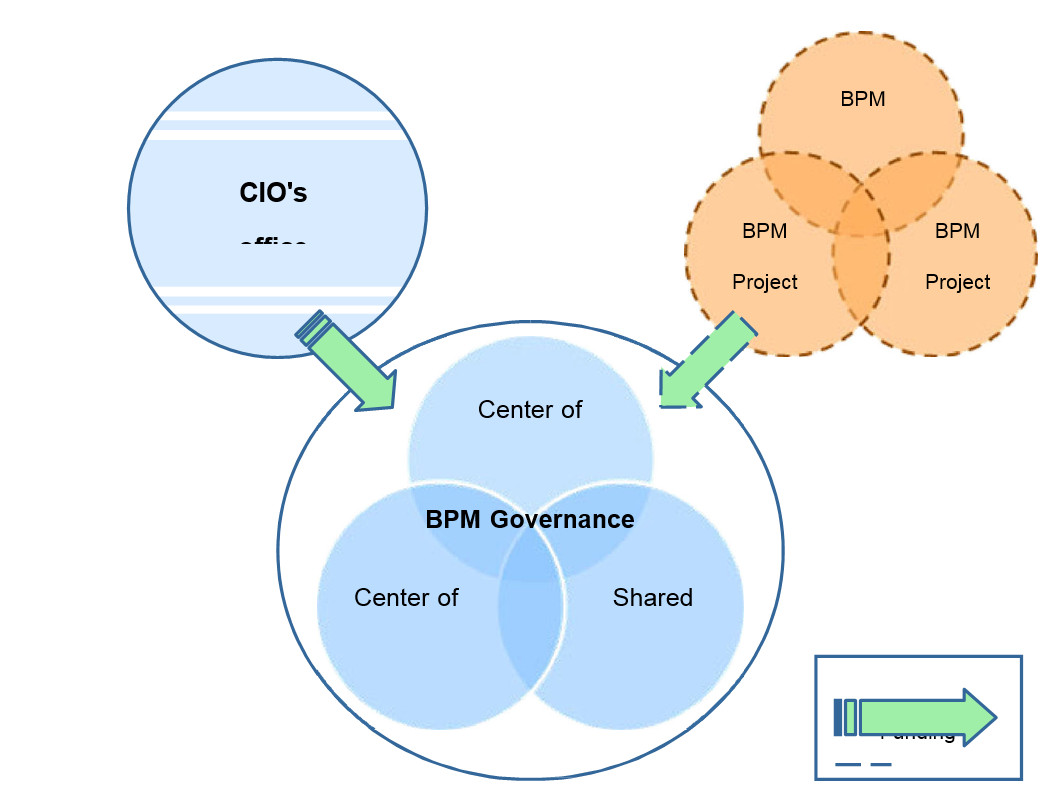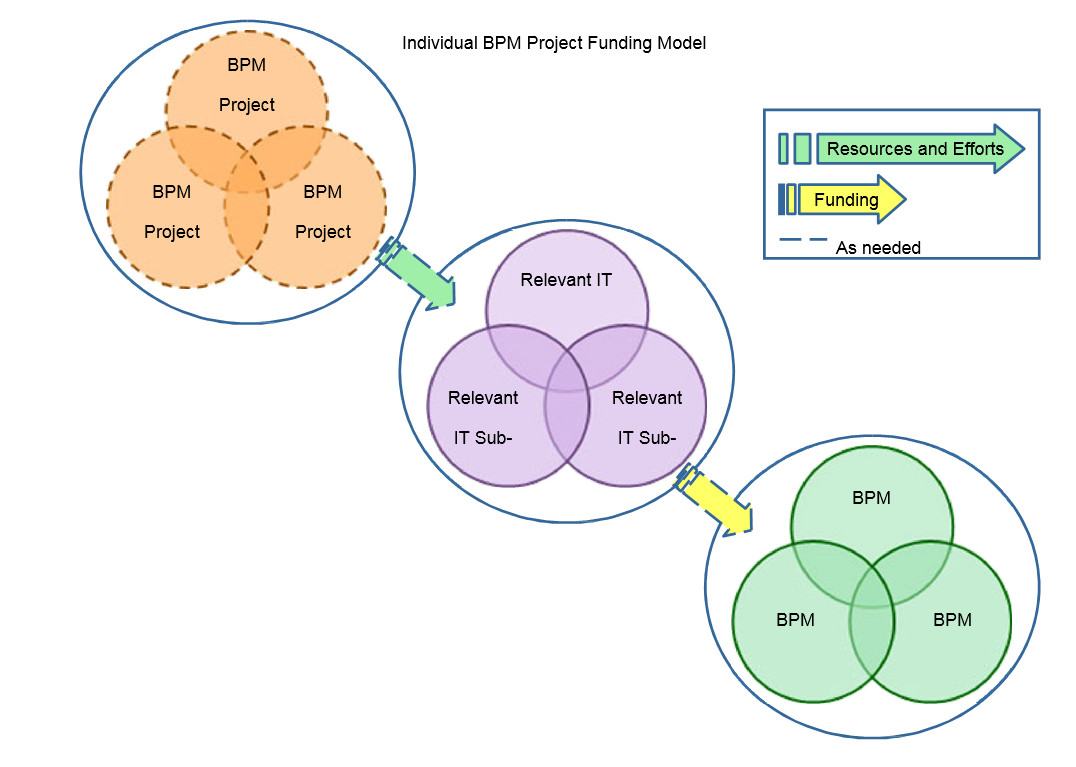Funding model for BPM initiatives
Funding model for BPM initiatives
The funding model concept for BPM initiatives exists at two levels:
- This more direct level is the funding model for the BPM CoE itself including the different elements of strategy, delivery, shared infrastructure.
- This level is a common funding model for individual BPM projects that are governed by the BPM CoE.
When planning for a BPM initiative, you must account for the time and cost that are associated with talent acquisition, knowledge sharing, skills development, not just resource “head” count and infrastructure assets.
Funding model for governance organizations
The simplest possible solution to funding a governance organization is to have it funded directly out of the office of the CIO. This solution has the advantage of bringing a clarity of mission, focus, and expected results to the organization.
As the organization grows and the volume of projects that require governance increases, it will become necessary to have the fixed costs be funded by the CIO’s office and the variable and volume-related costs driven by a internal-cross-billing model that charges the individual business units for their projects (or shared portion of) directly.
The hybrid model for drawing a portion of the funding directly from individual projects can be a recognition of the benefits that are gained by the individual projects through the use of resources from the governing organizations. Resources might include common reusable assets (technical and business), guidance, reviews, best practices, and shared infrastructure. In effect, this can be viewed as a BPM tax in exchange for participating in the BPM ecosystem.

Funding model for individual projects
Initially, most BPM projects are funded directly by the business area that needs a BPM solution, and are consumed by a specific IT organization that serves that business area. Your first project (maybe two) might entirely fund the initial delivery and infrastructure for BPM. (For this reason, first projects must adhere closely to corporate strategy with large and visible business value.)
However, as the BPM organization matures and achieves enterprise-wide adoption, it is beneficial to combine this point-to-point funding model with a common funding model that is used to gain access to an enterprise-wide BPM ecosystem. The goal of such access is to drive consistency in terms of how the ROI for each individual project is framed within the context of strategic BPM goals. This concept is the same maturity concept in the way that we see no individual business unit paying for all of the hardware and software infrastructure that is required to read and send email throughout the enterprise; although early adopters of email might have carried the entire burden of the original investment.
Over time, as this shared ecosystem develops and demonstrates the ability to successfully and repeatedly deliver individual BPM projects (the element of delivery in your BPM CoE), the need for a point-to-point funding model diminishes and a single, consolidated funding model emerges.
This centralized model will grow beyond providing oversight and delivery and evolve into a funding office where projects without existing funding can propose a business case and apply for funding.
The actual implementation of funding models can vary significantly from one organization to another depending on their larger financial model. Looking beyond the specific implementation, the primary aim of a central funding model is to drive consistency and alignment, and the secondary aim is to provide a source (or brokerage) of funding for BPM initiatives that seek funding.


